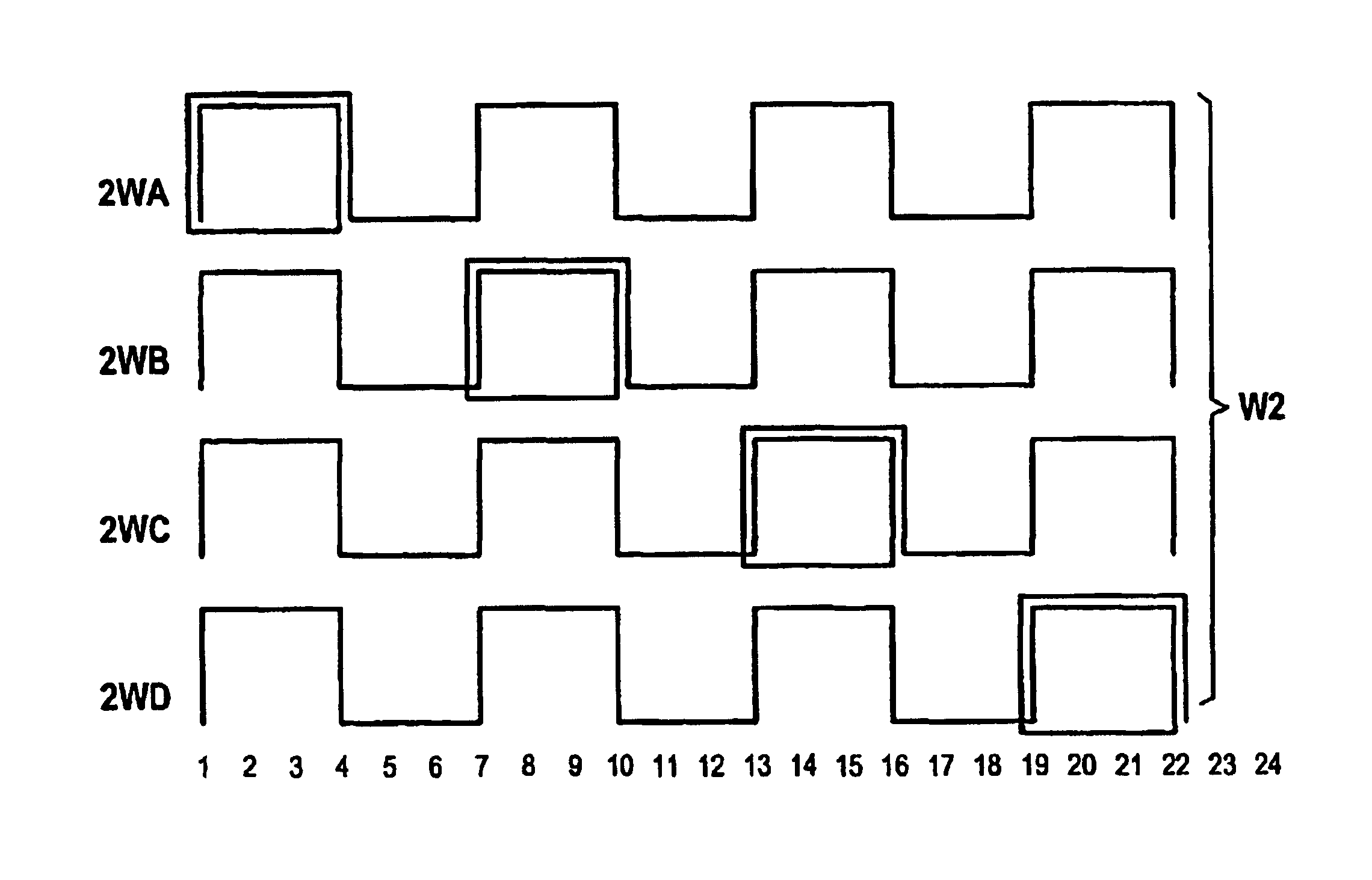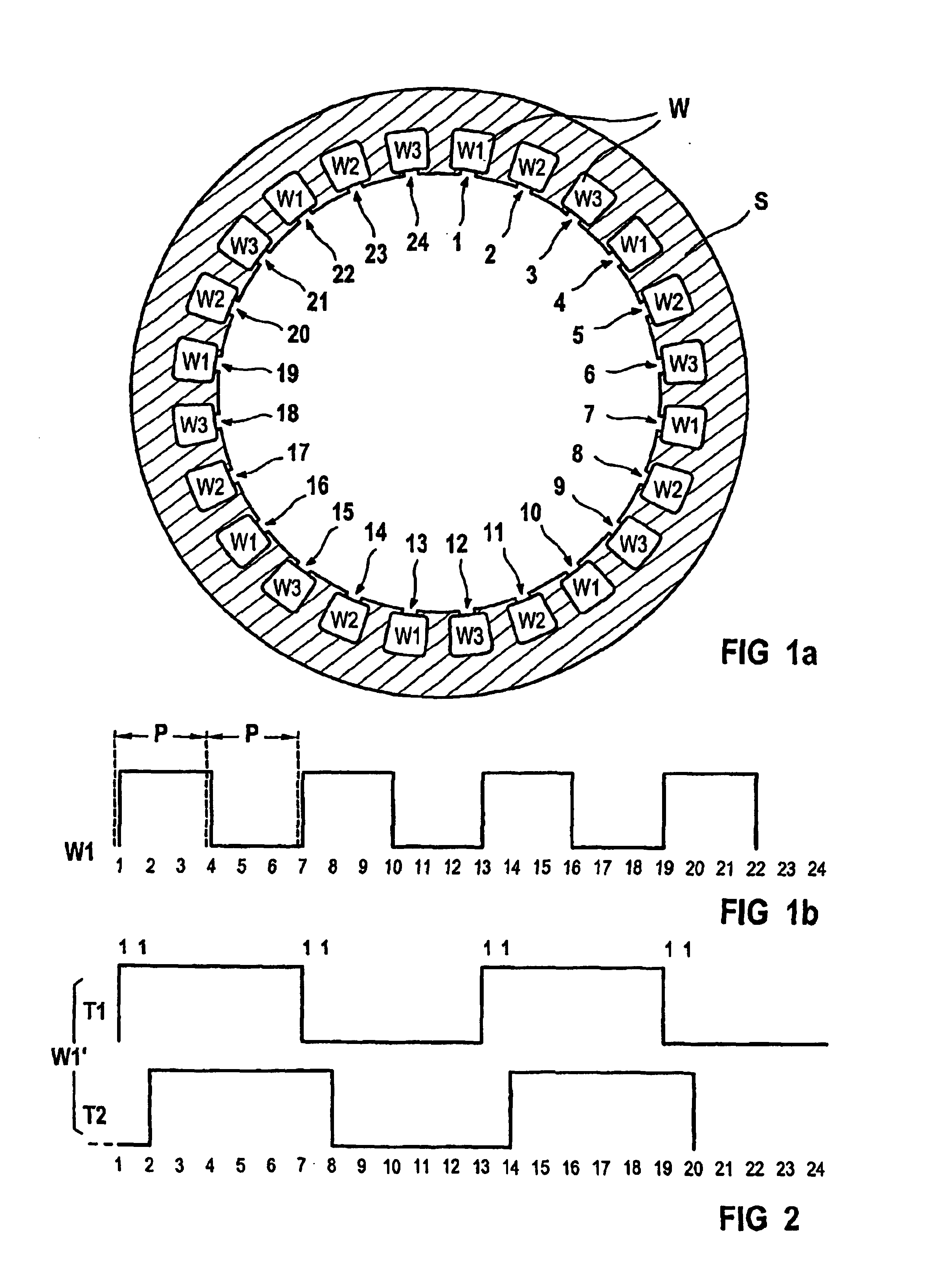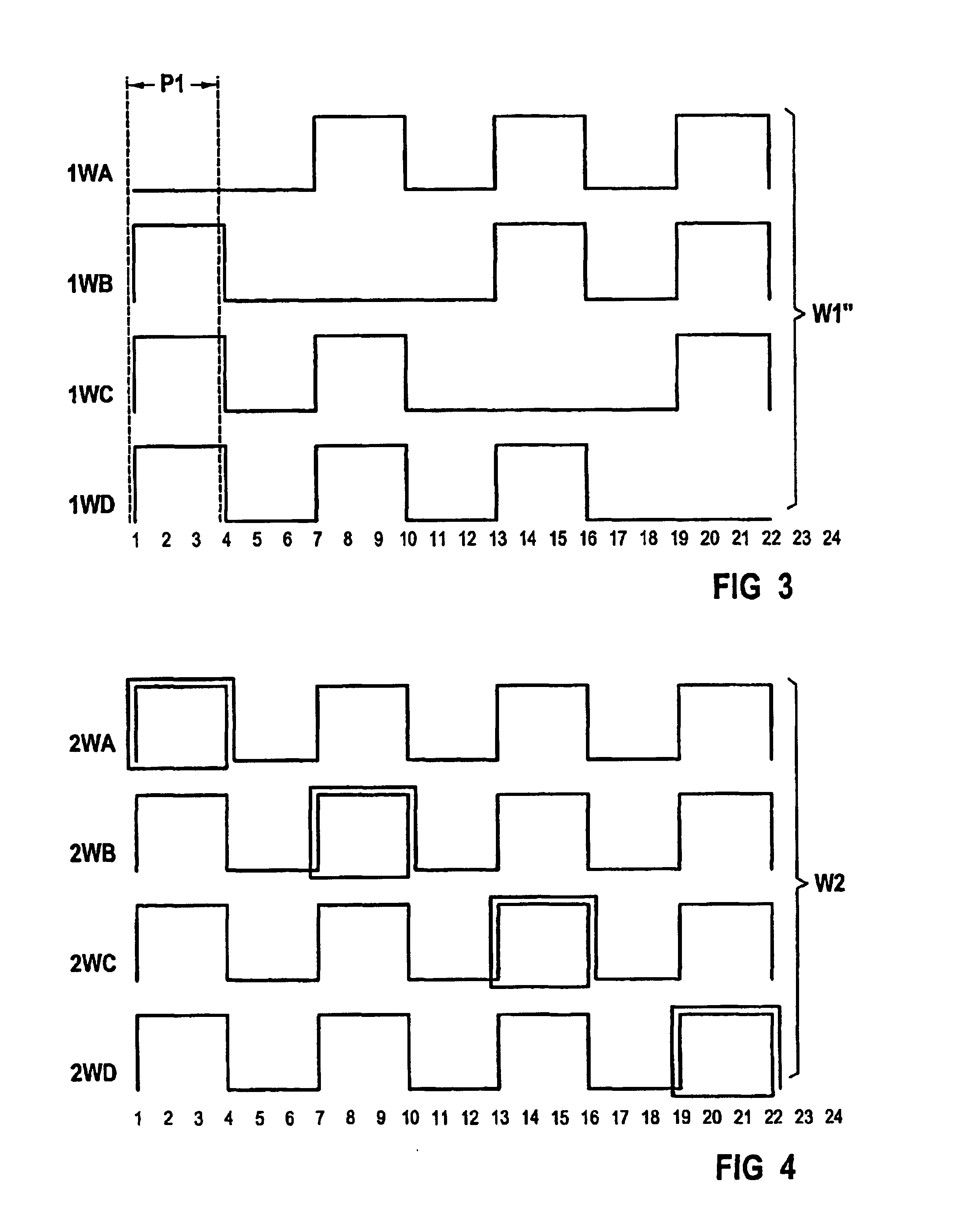Pole winding pattern having parallel wound paths
a winding pattern and parallel technology, applied in the field of windings, can solve the problems of inability to achieve the ratio of voltage to current by windings, the inability to finely adjust the voltage-holding turns count, and the inability to provide more than one path. the effect of improving the operating performan
- Summary
- Abstract
- Description
- Claims
- Application Information
AI Technical Summary
Benefits of technology
Problems solved by technology
Method used
Image
Examples
first embodiment
[0085]In a first embodiment, there is provided a first winding W1″ with three phases, each phase having four parallel paths 1WA, 1WB, 1WC, 1WD (see FIG. 3). Therefore, a=4. Only one of the three phases is shown in FIG. 3.
[0086]The paths 1WA, 1WB, 1WC, 1WD are implemented as wave windings. The first winding W1″ has 24 slots 1, . . . 24.
[0087]The first path 1WA runs along the slots 7, 10, 13, 16, 19, 22. The sections of the first path 1WA laid in the slots are interconnected by end connectors running outside the slots. In FIG. 3 the end connectors run horizontally, whereas the sections in the slots run vertically.
[0088]The first winding W1″ has a total of eight poles each wound by three of the four paths 1WA, 1WB, 1WC, 1WD. Therefore, p=4. A pole is formed by a slot wound by the phase and the end connector extending to the right to the next slot wound by the phase. Therefore, q=1. In FIG. 3, the region of the first pole P1 is shown schematically for the phase illustrated.
[0089]The eig...
second embodiment
[0094]In a second embodiment there is provided a second winding W2 having three phases, each phase being formed from four parallel paths 2WA, 2WB, 2WC, 2WD (see FIG. 4). Consequently, a=4. Only one of the three phases is shown in FIG. 4.
[0095]As in the first embodiment, the second winding W2 has eight poles forming four pole pairs, i.e. p=4.
[0096]In contrast to the first embodiment, each path 2WA, 2WB, 2WC, 2WD has an additional turn, the additional turns being evenly distributed over the pole pairs so that each pole pair is wound by five turns. Five conductors are disposed in each slot, so that zN=5. Once again each pole is formed by a slot and the right-extending end connectors adjacent thereto, i.e. a pole is formed by one slot coil. Consequently, q=1.
[0097]The voltage-holding turns count of the second winding W2 is given by: w2=4×1×54=5
[0098]The additional turns are implemented in the manner of a lap winding. This ensures that the four paths 2WA, 2WB, 2WC, 2WD begin and end at t...
third embodiment
[0099]In a third embodiment there is provided a third winding W3 comprising three phases, each phase having eight parallel paths 3WA, 3WB, 3WC, 3WD, 3WE, 3WF, 3WG, 3WH (see FIG. 5). Therefore, a=8. Only one of the three phases is shown in FIG. 5.
[0100]The third winding W3 has 8 poles and 24 slots 1, . . . 24. Therefore, p=4.
[0101]Each of the paths does not wind two adjacent poles. Each path omits to wind a different pair of poles from the remaining paths.
[0102]The first path 3WA, the third path 3WC, the fifth path 3WE and the seventh path 3WG correspond to the paths 1WA, 1WB, 1WC, 1WD of the first embodiment. The second path 3WB corresponds to the mirror image of the first path 3WA about the winding axis, said path having been shifted one pole to the right. This applies correspondingly to the fourth path 3WD, the sixth path 3WF and the eighth path 3WH.
[0103]Each pole is therefore not wound by two paths. For example, the first pole is not wound by the first path 3WA and the eighth pa...
PUM
 Login to View More
Login to View More Abstract
Description
Claims
Application Information
 Login to View More
Login to View More - R&D
- Intellectual Property
- Life Sciences
- Materials
- Tech Scout
- Unparalleled Data Quality
- Higher Quality Content
- 60% Fewer Hallucinations
Browse by: Latest US Patents, China's latest patents, Technical Efficacy Thesaurus, Application Domain, Technology Topic, Popular Technical Reports.
© 2025 PatSnap. All rights reserved.Legal|Privacy policy|Modern Slavery Act Transparency Statement|Sitemap|About US| Contact US: help@patsnap.com



